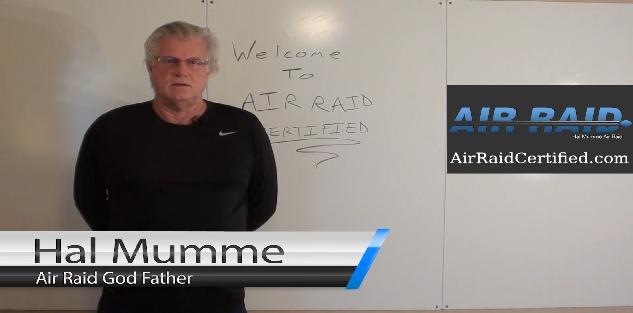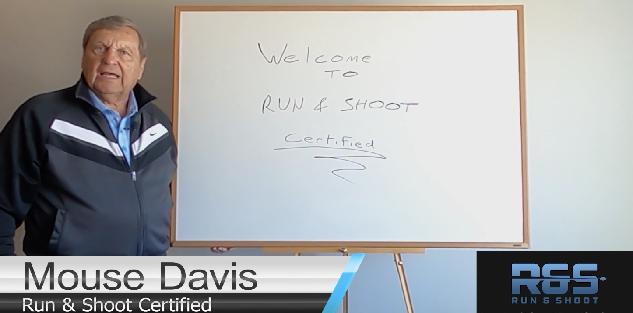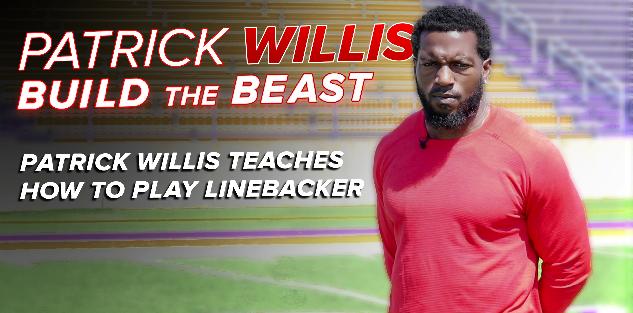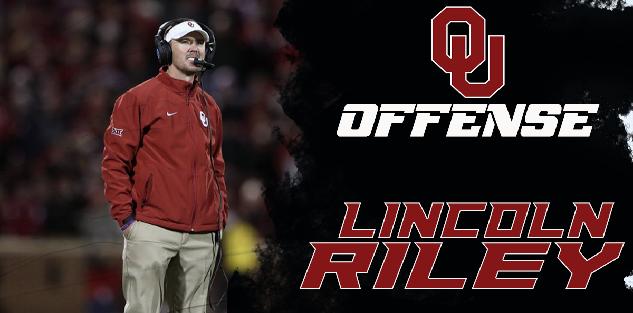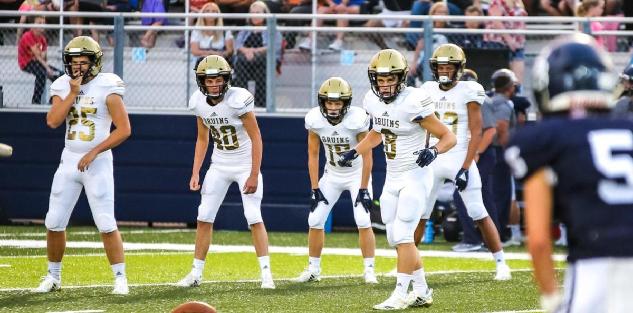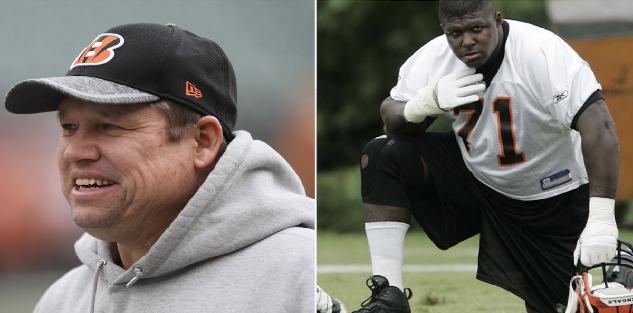Featured courses
- Jim Thorpe Award Winner Jahdae Barron’s 4 Drills for Dominating Receivers by Grant Young
- 5 Tips to Improve Your Football Game Plan by Andrew Dohre
- Game Changer RPO Football : Wing-T Offense by Andrew Dohre
- Mastering the Pass Rush: Expert Drills and Progression Tips from UCLA’s Coach Ikaika Malloe by Andrew Dohre
- 3 SPO’s to Protect the Passing Game and create opportunities in space by Keith Grabowski
- The Art of Running the Corner Route- Coaches and Players Prespectives by CoachTube Staff
- Evolve your Defense with Quarter, Quarter Half to Stop RPO by Coach Grabowski
- Top 10 College Football Players to Watch for in 2022 by Alec Burris
- Clemson vs. Syracuse Matchup of the Week by Keith Grabowski
- Sprint Out Passing: Move the Pocket for Success by Keith Grabowski
- Unlocking the True Potential of Your Special Teams Play by Keith Grabowski
- The Most Important Components of Air Raid by Keith Grabowski
- 4 Plays that Benefit from Bunch Formations by Keith Grabowski
- 3 Third Level RPOs for Explosive Plays by Keith Grabowski
- The Role of the Screen Game in Explosive Offense by Keith Grabowski
- The Chess Match: Win on the Perimeter (Part 1) by Coach Grabowski
- Unlocking the Power of Gap Manipulation to Limit Explosive Plays by Keith Grabowski
- TCU’s 3-3-5 and facing bigger personnel by Keith Grabowski
- Elevating Your Team: Strategies from Coach Matt Ruhle by Keith Grabowski
- 7 RPO’s for your playbook by Coach Keith
- Beyond Quarters - The Need For Additional Coverage Concepts by Keith Grabowski
- 5 Core Offensive Priniciples for a Winning Football Formula by Keith Grabowski
- Win Downfield - Attacking Different Areas Deep with 3rd Level RPO by Coach Grabowski
- WAKE FOREST’S UNIQUE RPO GAME by Keith Grabowski
- Adjustments to Defeat the Tite Front by Keith Grabowski
- Attack Defenses with The Versatile Y-Cross Concept by Keith Grabowski
- Play Action is a Cheat Code! - 5 Play Action Concepts to Increase Your Expected Points by Keith Grabowski
- Question from Rutgers OC - What does your offense say about your coaching? by Keith Grabowski
- Gap Schemes vs. Tight Fronts, Play Action Shots and Misdirection by Coach Grabowski
- Setting up your young Qb for success by Keith Grabowski
- The Hot Gap plus 3 Gap Scheme RPO’s to Stress the Defense by Keith Grabowski
- How Football Coaches Can Build A Game-Changing Special Teams Unit by Grant Young
- Master the Art of Quick Passing for High Completion Percentages by Keith Grabowski
- How to Be an Influential Football Coach by Grant Young
- How to Maximize Tackling Efficiency within Scheme by Keith Grabowski
- Offensive Drills of the Week by Keith Grabowski
- How a Stoplight Can Make Your Fly Sweep Takeoff by Keith Grabowski
- Keep your Drills Fresh and Your Skills Developing - Offense by Keith Grabowski
- Coach Kevin Kelley, Outside The Box by Keith Grabowski
- Want your defense to get off the field after third down? Sims and Creepers are the answer! by Keith Grabowski
- Create More Turnovers with Circuit Training & Win More Games! by Keith Grabowski
- Devastate the Defense with TE RPOs by Keith Grabowski
- Red Zone adjustments by Keith Grabowski
- CoachesClinic.com Featured Matchup: Cincinnati vs Indiana by Caleb Hopkins
- 3 NFL ZONE RUN PLAYS FROM WEEK 7 by Alex Kirby
- Sonny Dykes Teaches You How to Put Together an Offense by Coach Grabowski
- FIVE REASONS TO RUN THE 3-3 DEFENSE by Alex Kirby
- Getting Your Defense Ahead - 1st and 2nd down Pressures from Noah Joseph by John Grayson
- Chad Morris Teaches How To Builds an Offense by Coach Grabowski
- Get Your Offense a +1 With the QB Run Game by Coach Grabowski
- Are You Causing a 14 Point Turnaround...Against Your Team? by Coach Grabowski
- Learn How to Improve Your Offense with USC’s “Harrell Effect” by Coach Grabowski
- The Power of Influence - Rick Jones, Mizzou by Coach Grabowski
- Easy QB Runs to Drive Defenses Crazy by Ryan Eisenberger
- How many different ways can you make the defense cover everyone? by Ryan Eigenberger
- Win Passing Downs with Creepers and Sims by Coach Grabowski
- Always have a plan to play your best 11 by Keith Grabowski
- Dominate the Defense with Double Teams by Coach Grabowski
- Buffalo OC teaches his model for game planning by Keith Grabowski
- Put your 3 Deep Coverage in a Better Position with Zone Alert Rotations by Coach Grabowski
- 5 Keys to Using Trick Plays by Coach Grabowski
- Learn from 'Juggernaut' Offense by Keith Grabowski
- Bob Wylie - Offensive Line Breakdowns by Coach Grabowski
- Utilizing the Hybrid Linebacker to take away Offensive Advantages by Coach Grabowski
- Always have a plan to play your best 11 by Keith Grabowski
- Coachesclinic.com Featured Matchup: #6 Oklahoma vs #21 Texas by Caleb Hopkins
- Easy for You - Difficult for Them Adjustments by Keith Grabowski
- Coachesclinic.com Featured Matchup: Davidson College vs Presbyterian by Caleb Hopkins
- Week 5 National High School Football Rankings by Keith Grabowski
- Protecting Aaron Rodgers (and your own QB) by Caleb Hopkins
- Defensive Drills of the Week by Keith Grabowski
- Woo Pig - Add a wrinkle with these Arkansas Downhill Run Variations by Keith Grabowski
- Coachesclinic.com Featured Matchup: #7 Cincinnati vs #9 Notre Dame by Caleb Hopkins
- Offensive Drills of the Week by Keith Grabowski
- Coach Jason McEndoo Teaches #12 Oklahoma State’s Top Running Play by Keith Grabowski
- Adjustments - Attach Screens to your best plays, defend star receivers, & movement to stop the run by Keith Grabowski
- Coachesclinic.com Featured Matchup: Army vs #16 Wake Forest by Caleb Hopkins
- How To Implement A Running-Back-By-Committee Scheme by Brandon Ogle
- How To Become The Most Feared Offensive Lineman In Your League by Chrisian Benavides
- Wylie, McNally and Alexander Key Coaching Points on the Wide Zone Play by Keith Grabowski
- #21 Coastal Carolina’s play that is a whole offense within itself by Keith Grabowski
- 4 Plays that Benefit from Bunch Formations by Keith Grabowski
- Best Mesh Concept Plays by Ron McKie
- Forming Families For Football by Darryl Page
- Top 5 Things Coaches Should Strive To Get Out Of Spring Camp by Darryl Page
- 10 Tips To Know Before Attending Football Camps by James Breland
- Offensive Line Drills by Rick Bouch
- You’re a captain, now what? 5 Tips to bring your team together and establish yourself as a true leader by Lester Crafton
- COACHING THE 4-2-5 DEFENSE VS SPREAD TEAMS by Alex Kirby
- Gifts From Grinch by Coach Grabowski
- A Package to Help You Win Mid to Late Season by Coach Grabowski
- The Future of American Football: How to Run the Spread Offense by Coach Scott
- Chris Ash teaches Longhorn Tackling by Coach Grabowski
- The misunderstood Yet Powerful Run Scheme - Duo by Coach Keith
- THE GUS MALZAHN QUARTERBACK COUNTER PLAY by Alex Kirby
- FIVE TIPS FROM GUS MALZAHN ON HOW TO BUILD YOUR PLAYBOOK by Alex Kirby
- LITTLEST KID ON THE FIELD TRUCKS LINEMAN – YOU CAN’T MAKE THIS STUFF UP by Jacob
- HOW TO MAXIMIZE YOUR OFFSEASON FOOTBALL TRAINING by Dominic
- BAD CALL, GREAT COACH: THIS IS WHY PLAYERS LOVE PETE CARROLL by Jacob
- How to Get Recruited for Collegiate Sports by Brandon Ogle
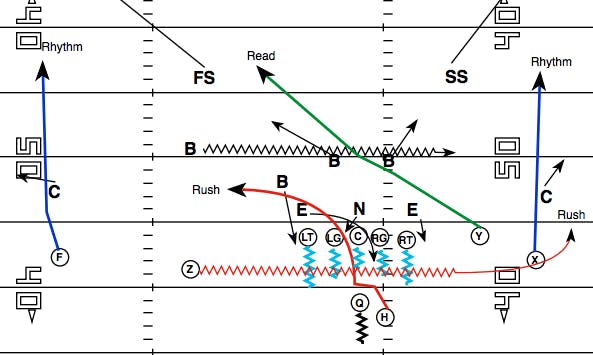
Top 10 Air Raid Offense Plays
The Air Raid offense is known to be one of the simplest passing offenses to install. Even if you don't know anything about the passing game or never coached a QB before in your life, you can put this offense in and see results.
Why is it so simple? Because the originators of the Air Raid decided to change the way football passing offenses were traditionally installed and even more importantly, changing how teams practice.
If you go to a typical high school football practice today, you will probably see these old practice traditions still being used - even though they have long been proved a waste of time.
1. Long lines of players waiting for one player to pass them the ball on a single route run.
2. 20 plus minutes just warming up and stretching before even starting practice.
3. Another 15+ minutes of just running conditioning at the end of practice because "we have to win the battle of conditioning."
There's more but I won't go into it.
If you go to an Air Raid team practice, not only will you not see any of these things, but you will also see the following:
1. Warmups designed to also include skill work like throwing and catching the ball. No more stretch lines and endless high knees and butt kickers!
2. Every receiver in every route catching a ball all thrown in progression from up to 5 Quarterbacks (or coaches) simultaneously. My favorite drill here is called Routes on Air.
3. NO CONDITIONING! Just lots of sprinting all practice. If you have so much standing around a practice that you need conditioning, you need to change the practice tempo and design. Guys should be conditioned within practice...and even then, not conditioned hard every single day! It never made sense to me why coaches would condition every single day...that's a perfect recipe for burnout and slow legs.
So don't just run these plays (or find 11 more awesome Air Raid Plays here). It was the practice strategies as much as the plays themselves that make the Air Raid what it now is today.
Learn more from coaches who have entire game breakdowns you can see diagrammed like Lincoln Riley at Oklahoma.
The mesh concept is one of Mike Leach’s favorites. It is a fairly simple concept but one that can give teams quite a bit of trouble. Crossing routes challenge the speed of defenders and also can cause confusion based on the idea that offensive players are crossing paths. Receivers know if it's man they keep running, if it's zone, they sit it down. A simple rub from your inside receivers gives the QB an easy read and the routes by X and Z can be tweaked to attack different coverages. For example, you can run a post behind the mesh to challenge the safeties and take them out of the equation on a deeper mesh concept.
This double slant concept is a great way of putting flat defenders in a bind. On the front side with the Y and Z we have two option routes. The Y will read the corner and the Z will read the outside backer. The key read is on the Y and Z side. It is a “rub” concept. The outside backer is the read. A way to switch this play up and add defensive conflict is to put the back on the Y/Z side and swing him to add a read for the outside backer.
The Post-Wheel concept is a staple of the Air raid. The Y wants to split the safeties. If they bail, the Y can sit. Another rub concept here with the H and Z. The Z has to read whether to stretch the safety on a post or shorten his route into a slant if the window is there. The checkdown is the back swing and the X dig backside.
Here is another double slant concept, but this time we have a fade/out on the front side of the formation. The QB will make pre-snap reads based on defender alignments and will make a decision on what will be his read side. Typically if a defense is in Cover two, the QB will try and hit the fade in between the corner and safety, if a man concept is detected, he should go frontside to the double slant.
The Y Option play is a staple in most passing offenses. There is a great clip from Cowboy’s great, Jason Witten on this play concept. The Y option provides an option route for one of your inside receivers. The F flash will hopefully draw the Sam out of the box and open up a window for the Y. If the Sam sits on the Y then the F flash should be open fairly quickly. This is a great play for a team that has a QB and Y that are on the same page.
The four vertical concept is potentially the epitome of what the air raid offense is all about. Here is a 2x2 version that shows that all four wide-outs have options in their vertical routes. Gone are the days of 4 straight fly routes. Now receivers are reading coverages and bending routes to stem defenders and open windows for their QB’s.
Here we have the 3x1 version of the four vertical concept. This version gives us another Y option but instead of a stick concept we now utilize a vertical or drag. The Y will read the backside safety and make a decision on when to bend the route in.
Another mesh concept in the Mike Leach shallow series. This route concept provides a ton of options for a QB. Essentially it is a high-low read. There are tons of options and a QB has to be seasoned enough to understand the reads here. The X and Y should be the first key for the QB, with the F being a quick option if the outside backer is stacking back on the Y. H or Z are really drawing attention in this play but Z can be a killer threat here if the Strong Safety jumps the Y dig here and the corner is overleveraged.
The inside zone RPO is probably the most used RPO in the game right now. Establishing your run game and “marrying” it to a quick pass game concept can be a deadly concept for any offensive coordinator. Generally, a QB will check the box and see where the numbers are. An inside zone track is used by the RB and the QB will make a decision on whether to give or pull the ball. The key read on this play is the Mike who is marked in red below. If he steps up, the QB should pull and throw to the Y. If he sits, the QB should give. A simple play that can build significantly and put defensive players in a bind.
The bubble concept is not “new” to football by any means but it is still an effective and simple play for air raid offenses to implement into their playbooks. There are so many different concepts that you can build off the bubble that it can serve as a great base play for almost any offense. Getting “air-raid” receivers to buy into blocking can be the biggest challenge to a pass-first offense screen game.
Conclusionsion
You can always start simple and just run one or two of these concepts. Mesh is an absolute must have concept and with just a few tags, you can make it tough for defense who think they have it stopped.
Take control of your passing game and know that you have options well beyond throwing fades (the lowest possible percentage throw in football). Show your QB's the simple progression and then all you have to teach them is how to move quickly through it.
The simpler you keep it the better and there is no need to get greedy with your passing game. Just take what they are giving you and soon enough somebody will miss something and you will get the huge plays you are looking for.

